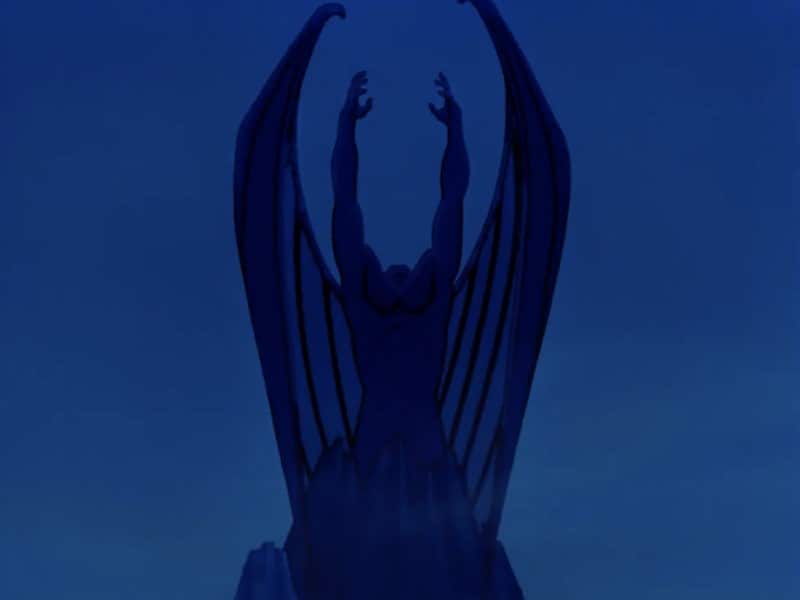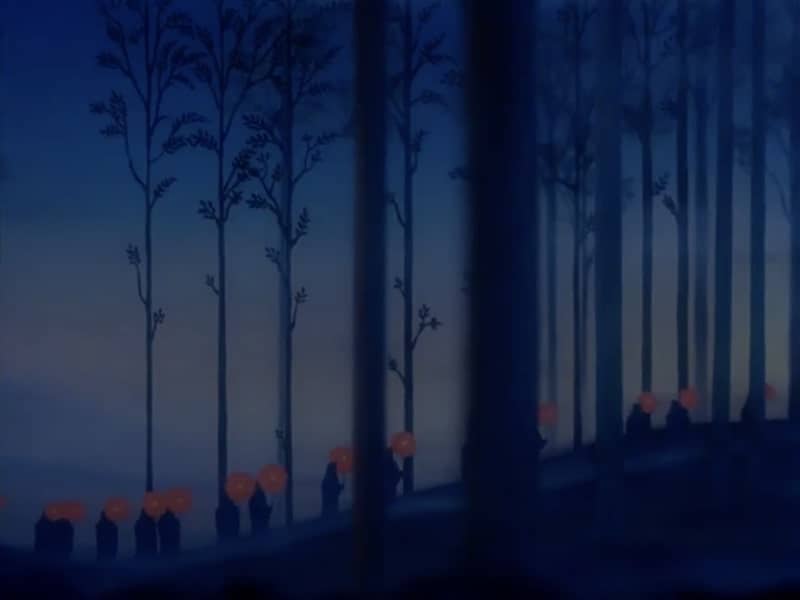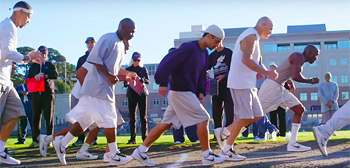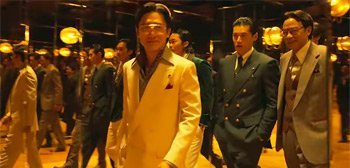How Animators Created the Elaborate “Ave Maria” Sequence for ‘Fantasia’
Welcome to How’d They Do That? — a bi-monthly column that unpacks moments of movie magic and celebrates the technical wizards who pulled them off. This entry explains why the “Ave Maria” sequence in Disney’s Fantasia was one of the most challenging filmmaking moments in animation history.
Fantasia was Walt Disney’s greatest and weirdest experiment. Conceived as a technical playground unfettered from linear narrative, the 1940 film is as much an artifact of Disney’s relentless desire to innovate as it is a glimpse into what feature animation could have looked like had the film been a success. Conceptually, Fantasia was to demonstrate what the studio, and the medium of animation itself, could accomplish. Nearly a century later, Fantasia remains the most surreal, phantasmagoric, and ambitious feature film Disney has ever produced.
Fantasia consists of seven sequences set to classical music arranged by Leopold Stokowski. The lights go down and our master of ceremonies, music critic Deems Taylor, warmly introduces us to the premise of Fantasia itself.
Soon, the concert hall fades away and Stokowski’s famous free-hand conducting takes on a grand and patently cinematic aspect, his fingers arcing with the purpose and power of an especially fearsome magician. And so, by Stokowski’s back-lit machinations, we are transported: to impressionistic miasma, to the dawn of life, to a mythic past, and to a final act that sees life and hope triumph over death and chaos.
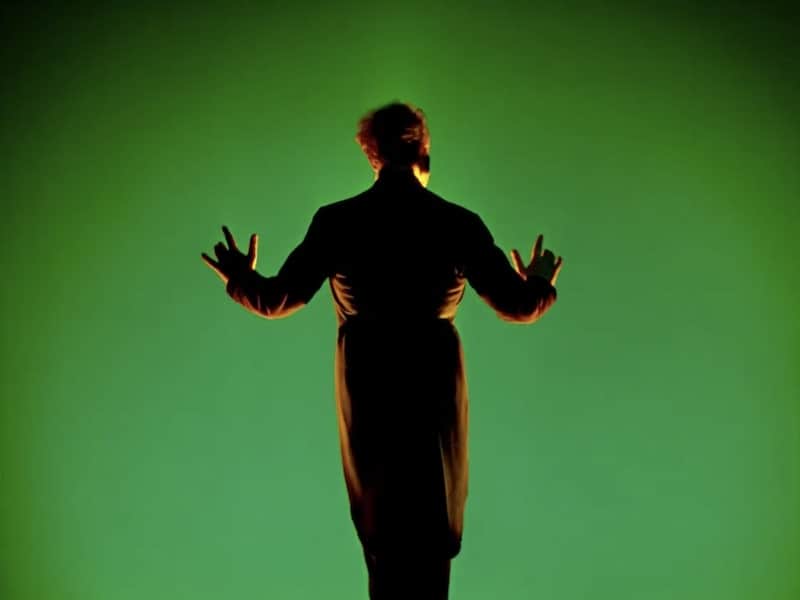
After the most comedic sequence in the film (a ballet parody set to Amilcare Ponchielli’s “Dance of the Hours”), Disney takes us to Hell. Or rather, to Bald Mountain. Directed by studio-mainstay Wilfred Jackson, the sequence begins with an interpretation of a symphonic poem by Modest Mussorgsky. “Night on Bald Mountain” depicts the awakening of a Slavic deity known as Chernobog, whose awful majesty and deliciously articulated hands tear the earth asunder to reveal a Boschian frenzy.
At a fever pitch, dawn breaks. and the dark god recoils. Bells give way to strings as the denizens of Hell return, pallid and compliant, to their graves. In one of Stokowski’s great tricks, the swoop of a harp effortlessly transitions the soundtrack from Mussorgsky to Franz Schubert. “Ave Maria” (D. 839) begins, and Chernabog’s once forbidding mountain fades into the cool, soft fog of daybreak. For the first time in the film’s score, we hear voices. And the blissful choir signals the arrival of a never-ending parade of figures whose orange candles light the way through stained-glass forests towards the warm glow of sunrise.
As a child, a seven-minute pan through a forest never captured my imagination. A spiritually resolute pilgrimage doesn’t hit the same as a gothic bacchanal. Today, as a reformed child, I admit I cannot watch this sequence without tears in my eyes. It is a blissful punctuation mark. A contemplative procession that mirrors (and ideally prompts) that rare euphoric feeling of exiting the dark aisles of a movie theatre, heart in your throat, in awe of what you’ve just witnessed.
As we move from the profane to the sacred, the religious themes are didactic and a rare nonsecular slip on the part of Disney. Fantasia was, after all, the notoriously conservative filmmaker’s most personal project. It only makes sense that “Ave Maria” would be so unflinching in its faith in the power of, amongst other things, art itself.
Naturally, for all its tranquility, this serene vision was one of the most technically challenging and catastrophe-riddled sequences in animation history: a protracted camera movement through two-dimensional animated space that, at the time, was absolutely audacious. So what’s going on here? What makes this sequence so impressive? And what’s all this about catastrophes?
How’d they do that?
Long story short:
The sequence was filmed as one long continuous shot. Animators used a multiplane camera and hundreds of feet of painted glass to accomplish the effect.
Long story long:
The visual direction of the “Ave Maria” segment, per Disney’s instruction, was to bring the background artwork to the forefront. And yet, despite its minimal action, the segment proved to be one of the biggest challenges in the film.
For one thing, the slowness and reduced scale of the foreground figures (the monks/nuns/etc.) actually made them much harder to animate. In animation, slower movement requires more frames per second to achieve persistence of vision and to avoid “strobing”. But the difficulty of animating the subtle movement of the robed pilgrims pales in comparison to the more pressing spatial challenges of the sequence, innovatively filmed as one long continuous take. Namely: (1) the massive lateral scale of the procession; and (2) the simulated depth of field required by the final, protracted zoom.
Now, if you’re more familiar with digital animation or live-action cinematography, you may be wondering what all the fuss is about. After all, what’s so complicated about simulating camera movements in 2-D space? Well, when it comes to traditional hand-drawn animation: everything is more complicated. However, Disney animators had a revolutionary piece of technology at their disposal: the multiplane camera technique.
By moving forward and through the world, objects appear to grow and shrink in size relative to your position. How to animate this traditionally without losing your mind and your budget? The multiplane camera solves the problem by splitting a field of view (a.k.a. the area that is visible through a camera) into different planes for the foreground, middleground, and background. These planes, or levels, are typically layers of painted glass, each with a different element of an animated frame.
The multiplane camera allowed artists to create the illusion of three-dimensional space in a two-dimensional animated setting. This in turn allowed them to simulate tracking shots and zooms by moving the various planes in relation to the camera so as to respect optical principles like parallax. If you’re looking for it, evidence of a multiplane camera is all over Fantasia. But nowhere is the technique more brazenly and simply deployed than in “Ave Maria.”
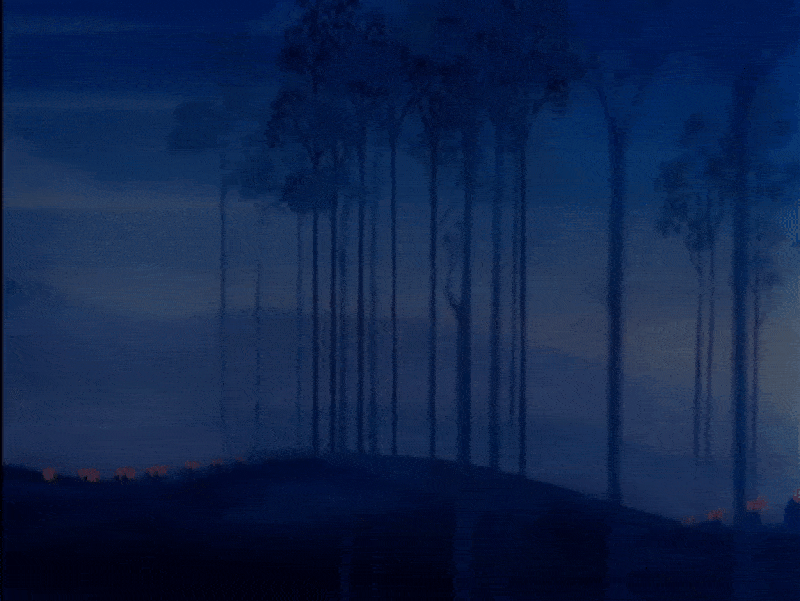
With limited animation in the traditional sense (save the consummate long-shot of the pilgrims) the sequence is predominantly a multiplane effect constituted of long takes and a series of hazy cross-dissolves. Supported by a custom-built crane, the studio’s horizontal multiplane camera was built to photograph 3 x 4-foot planes of painted glass. These were mounted on moveable stands, like Baroque set dressings, and moved as required to produce the illusion of a tracking movement.
The “Ave Maria” sequence concludes with one of the most elaborate single shots in animation history. The final shot of the sequence, and incidentally of the film itself, ran for two-hundred and seventeen feet of film, the longest shot in animation at that time. The single zoom begins in darkness and approaches a sliver of vertical light, which gradually reveals itself as the mouth of a clearing overlooking a wide valley.

As John Culhane details in his book Walt Disney’s Fantasia, the scene was filmed continuously by a crew of nine technicians over six full days and nights. A special camera rig was specifically constructed for the final shot and spanned the forty-five-foot wide soundstage.
The sequence had to be shot three times. Not because the animators were exactly satisfied with the final take, but because, quite simply, it was the final take out of necessity. During the first take, the technicians accidentally used an incorrect lens, capturing subjects beyond the glass planes. With limited time left before the premiere, the technicians began working on the second take. Three days into the reshoot, an earthquake hit. Unable to determine if the earthquake misaligned the equipment, the take was scrapped.
The morning after the earthquake, the animators tried again, and the third time proved the charm. On November 13, 1940, an audience at New York City’s Broadway Theatre saw the first-ever screening of Fantasia, unaware of how close they came to not seeing the completed film. The finalized footage only arrived four hours prior to the screening. There’s coming in under the wire, and then there’s Disney frantically processing and couriering a physical print across the continent.
What’s the precedent?
Fantasia is both the artistic and practical extension of the Silly Symphonies, a series of seventy-five animated musical shorts produced by Walt Disney Productions between 1929 to 1939 (animation began on Fantasia early in 1938). Disney (the man) conceived of the Silly Symphonies as a platform for animators to experiment with different processes, characters, and artistic styles. More to the point, the shorts were to pave the way for the studio’s foray into animated feature filmmaking.
Because of the Silly Symphonies, artists at Disney were able to test out a wide array of techniques and technologies. For instance, after securing limited exclusive rights to three-strip Technicolor, 1932’s Flowers and Trees became the first animated film to use a full-color Technicolor process, which proved, to put it mildly, massively successful.
The Silly Symphonies also allowed for the testing of a critical technical innovation that would prove instrumental in Disney’s quest to achieve a more “cinematic” style of animation: the multiplane camera.
Early forms of the multiplane camera had been kicking around since Lotte Reiniger’s The Adventures of Prince Achmed (1926). However, the most famous multiplane camera was created by William Garity for Walt Disney. The camera was specifically created for use in Snow White and the Seven Dwarves. But the technology was first tested in a 1937 Silly Symphony called The Old Mill, which was directed by who else but “Night On Bald Mountain/Ave Maria” director Wilfred Jackson.
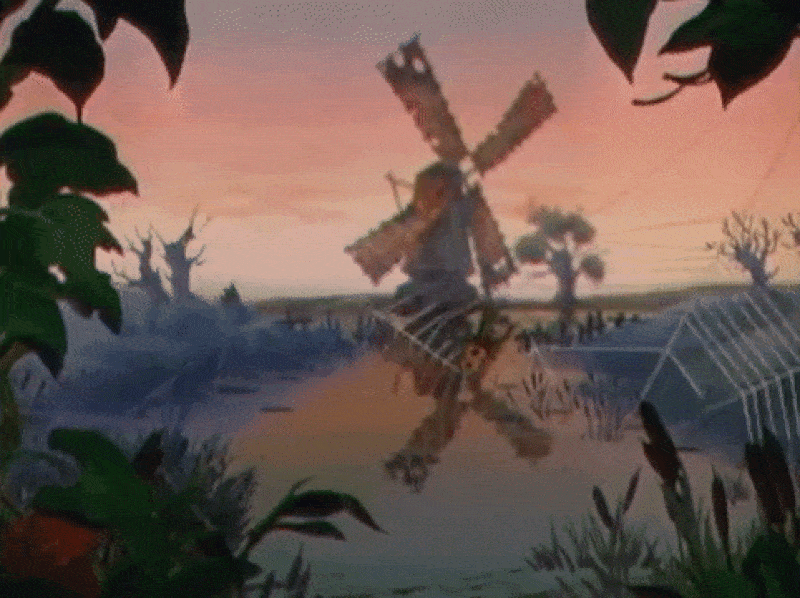
The multiplane camera was eventually rendered obsolete by its digital equivalent in the Computer Animation Production System (CAPS) process. But the obsolescence was, poetically, not unrelated to the demise of Fantasia. If not the film, then the ethos behind it. Walt Disney had originally planned to keep Fantasia in a permanent state of release. The idea was that new sequences would intermittently replace old ones, yielding a cinematic experience that would never look or feel the same way twice. Ultimately, the idea was scrapped due to the project’s unwieldy scope and Fantasia’s unreceptive critical response, which admonished the film (among other things) for debasing classical music in an attempt to elevate cartoons.
To boot, screening Fantasia itself was inordinately difficult. The film holds the distinction of being the first commercial motion picture exhibited with stereophonic sound. And while the Disney-patented “Fantasound” was revolutionary, it was also cumbersome, prohibitive, and hilariously expensive. This, coupled with the fact that the film couldn’t premiere overseas because World War II was happening, resulted in disappointing box office numbers. Even after the film found commercial success in its many re-releases, Fantasia’s reputation as a flop persists to this day and haunts all extant (and future) imitators. And so Fantasia remains: utterly alone, a corpulent relic of ambition, and a lonely genre unto itself.
I doubt that Disney will ever attempt anything as creatively ambitious and financially perilous as Fantasia ever again. The cynical, risk-averse approach that now defines the studio seems especially antithetical to the very of-a-time idea Fantasia represents. Namely: to take risks, and in so doing, expand the scope of what animation can do. In a 1940 review, The New York Times described Fantasia as “something which dumps conventional formulas overboard and boldly reveals the scope of films for an imaginative excursion.” It is difficult to reconcile that comment alongside Disney, as it exists today.
